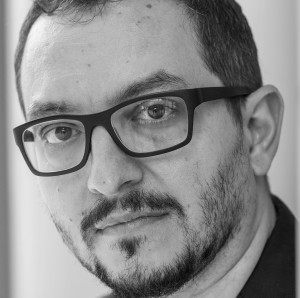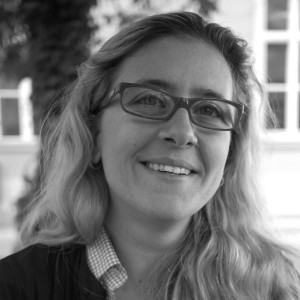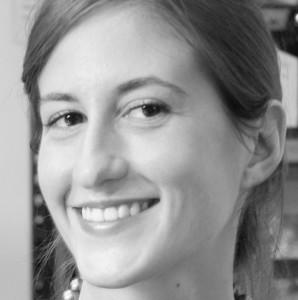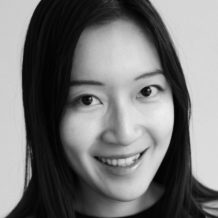Davide Quadrio (乐大豆)
Founder and Director
 Davide Quadrio is a China based producer and curator. He founded and directed for a decade the first not-for-profit independent creative lab in Shanghai, Bizart Art Center, as a platform to foster the local contemporary art scene. In 2007 Quadrio created Arthub Asia, a production and curatorial proxy active in Asia and worldwide. He is currently hosted by Shanghai Visual Art Institute and is working as curator for the Aurora Museum, Shanghai. Assisted by ongoing collaborations with Arthub the Museum plans to open a new contemporary art wing in 2016.
Davide Quadrio is a China based producer and curator. He founded and directed for a decade the first not-for-profit independent creative lab in Shanghai, Bizart Art Center, as a platform to foster the local contemporary art scene. In 2007 Quadrio created Arthub Asia, a production and curatorial proxy active in Asia and worldwide. He is currently hosted by Shanghai Visual Art Institute and is working as curator for the Aurora Museum, Shanghai. Assisted by ongoing collaborations with Arthub the Museum plans to open a new contemporary art wing in 2016.
He is part of the Curatorial Board of PAC, Pavilion of Contemporary Art of Milan, as well as he is responsible for the international curatorial program of Scene 44, Marseille a platform for production between visual art, movement and space. With Bizart and its team, and currently with Arthub Asia, Quadrio has organised hundreds of exhibitions, educational activities and exchanges in China and abroad, developing relationships with local and foreign artists, independent organizations and institutions worldwide.
Defne Ayas
Co-Founder

Defne Ayas co-founded Arthub Asia with Davide Quadrio in 2007. As the Director of Programs for Arthub Asia she (co) curated and co-produced a number of memorable projects. At the time she was also working as an adjunct faculty member at New York University in Shanghai (2006-2011).
As of 2012, Defne is the Director and Curator of the Witte de With Center for Contemporary Art in Rotterdam. Since 2005, Ayas has been a curator of PERFORMA, the biennial of visual art performance of New York City. In September 2012, Ayas co-curated the 11th Baltic Triennale with Benjamin Cook, LUX.
Ayas is a Board member of Rijksakademie; a curatorial advisory board member of PAC (Milan); Jan Van Eyck Academy (Maastricht), Collectorspace (Istanbul), SAHA (Istanbul), and Art Review Asia; a curator at large of Spring (Hong Kong) and is a regular jury member and speaker at a number of fairs including Art Rotterdam, Art Brussels, Artissima, and Art Basel. Ayas occasionally contributes to publications such as Yishu Journal, A Prior, Mousse and Creative Time Reports, and was nominated for ICI¹s Independent Curatorial Vision Award in 2012.
Charles Esche
Director

Charles Esche has been the Director of Van Abbemuseum, Eindhoven since 2004 and the Editorial Director of Afterall Journal and Books based at Central St. Martins College of Art and Design, London, since 1998 when he first helped launch the publication. During his directorship at Van Abbemuseum Charles Esche has carried out several successful collaborations with Arthub Asia, including Double Infinity in 2010 and the ongoing Qiuzhuang Project–a dispersed museum project.
Charles was appointed the fourth Director of Arthub Asia in 2013, and in 2014 he was the Director and Curator of the 31st Sao Paulo Biennale. Previously in 2012, together with Davide Quadrio, Defne Ayas and Agung Hujatnikajennong, Esche also curated the Bandung Pavilion for the 9th Shanghai Biennale, an integral part of the City Pavilions Project. He has experience (co-)curating a number of other major international exhibitions. In 2014, with six other European museums he established the L’Internationale confederation that aims to create a European modern and contemporary art institution by 2017.
Qiu Zhijie (邱志杰)
Director

Arthub Director Qiu Zhijie was born in Zhangzhou, Fujian Province, China, in 1969. He graduated from the Printmaking department at China Academy of Art in 1992 and started to become active in the contemporary art scene. He is a professor at the School of Inter-media Art at China Academy of Art, he works and lives in Beijing and Hangzhou.
As an artist, Qiu Zhijie is known for his calligraphy and ink painting, photography, video, installation and performance works. His art is representational of a new kind of experimental communication between the Chinese literati tradition and contemporary art, social participation and the power of self-liberation of art.
As an art writer, Qiu Zhijie published several books including: The Image and Post Modernism (2002), Give Me a Mask (2003), The Limit of The Freedom (2003), The photography after Photography (2004), On Total Art (2012). Catalogs of his work include: Breaking through the Ice (2009), The Shape of Time (2007), Archeology of Memory (2006). He was also the curator of the first video art exhibition in China in 1996, and curated a series of Post-sense Sensibility exhibitions during 1999 and 2005 promoting the young generation of Chinese artists. In 2012 he was the chief curator of the 9th Shanghai Biennale Reactivation.
Francesca Girelli (葛拂兰)
Curator and Researcher

Francesca Girelli is a curator and producer working for Arthub Asia. With a background in the art market, Francesca moved to China in 2011 to shift the focus of her research on transcultural curatorial practices. In 2012 she co-organized the City Pavilions Project, an integral part of the 9th Shanghai Biennale. Since 2013 Francesca is also collaborating with Ramdom Association in the development of DEFAULT, a biennial 10-day masterclass in residency for artists. Francesca is also carrying out research on the content of the FarEastFarWest Collection as an important example of the contemporary art scene in the Shanghai of the past and present decades.
You Mi
Director / Curator

You Mi (由宓) is a Beijing-born curator, researcher, and academic staff at Academy of Media Arts Cologne, where she lectures on arts and media theory with a social-political, transhistorical and transcultural perspective. She has worked as curator of artistic research projects that were shown in Shenzhen/Hong Kong Bi-City Biennial of Architecture and Urbanism (2007), Istanbul Design Biennale (2012), Lisbon Triennale and Athens Biennale (2013), v2_lab for the unstable media (2015), SAVVY Contemporary (2016), among others.
Her long-term research and curatorial project takes the Silk Road as a figuration for deep-time, deep-space, de-centralized and nomadic imageries. Under this rubric she has curated a series of performative programs at Asian Culture Center Theater in Gwangju, South Korea and the inaugural Ulaanbaatar International Media Art Festival, Mongolia (2016). A current iteration of this research concerns Northeast Asian modern and transnationalism in the early 20th century.
Her academic interests are in performance philosophy, science and technology studies, as well as philosophy of immanence in Eastern and Western traditions. Her writings appear on Performance Research, Kaleidoscope, MaHKUscript: Journal of Fine Art Research, publication of Sharjah Art Foundation and Asian Culture Center, among others.
 Davide Quadrio is a China based producer and curator. He founded and directed for a decade the first not-for-profit independent creative lab in Shanghai, Bizart Art Center, as a platform to foster the local contemporary art scene. In 2007 Quadrio created Arthub Asia, a production and curatorial proxy active in Asia and worldwide. He is currently hosted by Shanghai Visual Art Institute and is working as curator for the Aurora Museum, Shanghai. Assisted by ongoing collaborations with Arthub the Museum plans to open a new contemporary art wing in 2016.
Davide Quadrio is a China based producer and curator. He founded and directed for a decade the first not-for-profit independent creative lab in Shanghai, Bizart Art Center, as a platform to foster the local contemporary art scene. In 2007 Quadrio created Arthub Asia, a production and curatorial proxy active in Asia and worldwide. He is currently hosted by Shanghai Visual Art Institute and is working as curator for the Aurora Museum, Shanghai. Assisted by ongoing collaborations with Arthub the Museum plans to open a new contemporary art wing in 2016.





